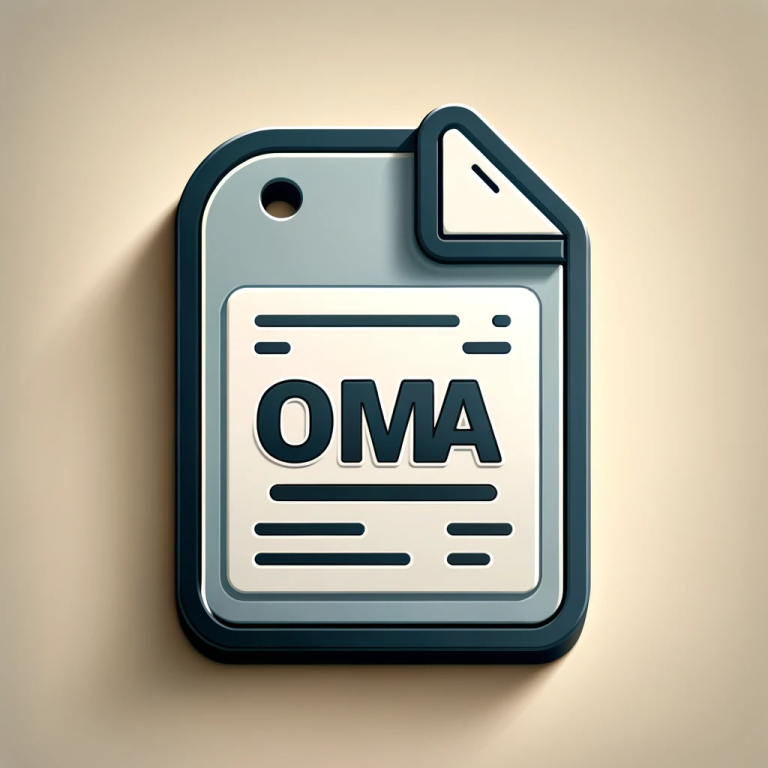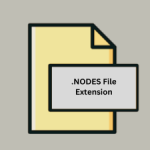.OMA File Extension

Sony OpenMG Music File
| Developer | Sony |
| Popularity | |
| Category | Audio Files |
| Format | .OMA |
| Cross Platform | Update Soon |
What is an OMA file?
The .OMA file extension stands for Sony OpenMG Music File, a format primarily associated with ‘OpenMG,’ a music file management system developed by Sony.
These files are part of Sony’s digital rights management (DRM) scheme, which was designed to control the distribution of digital media.
OMA files typically contain audio tracks encrypted and compressed by Sony’s ATRAC3 or ATRAC3plus codecs, ensuring that the music content is secured and used within the constraints of the DRM.
More Information.
Introduced in the early 2000s, the .OMA format was part of Sony’s MagicGate technology, which included encryption and playback restrictions on digital music.
The initial purpose of the .OMA file was to deter piracy and unauthorized distribution of digital audio files, especially concerning music.
This was a time when the music industry was grappling with the impacts of digitalization and the rampant piracy issues that came with it.
Sony’s solution was to create a format that could be played only on specific, authorized devices, like Sony’s own Walkman series or via its SonicStage or Connect Player software.
Origin Of This File.
The .OMA file format originated from Sony’s need to establish a secure and controlled environment for its audio content distribution.
This need was primarily fueled by the rise in digital media piracy and the subsequent need for content producers and distributors to protect their intellectual properties.
Sony’s OpenMG was a response to this, providing a platform that supported encrypted media playback and transfer to authorized devices only.
File Structure Technical Specification.
The .OMA file structure encapsulates audio data encoded with ATRAC3 or ATRAC3plus codecs, combined with DRM information.
This setup ensures that the audio content is not only compressed efficiently but is also secured against unauthorized usage.
The file header contains metadata about the track, including the artist, album, and track information, along with DRM constraints detailing the rights associated with the file (such as the number of times it can be played or copied).
How to Convert the File?
Converting .OMA files (Sony OpenMG Music Files) to more accessible formats involves circumventing the DRM protection, which can be technically challenging and may have legal implications depending on your jurisdiction and the terms under which the content was originally purchased.
Here’s a general guide on how to convert .OMA files, primarily focusing on using Sony’s SonicStage software and other methods:
1. Using Sony’s SonicStage (or similar software):
Play and Record Method:
- Play the .OMA file in SonicStage or a similar program if available.
- Use a separate audio recording program like Audacity to record the output in real-time.
- Save the recorded audio in a non-DRM format like MP3.
Burning to CD and Ripping Method:
- Burn the .OMA files to an Audio CD using SonicStage.
- Rip the Audio CD back to your computer using CD-ripping software. During this process, choose MP3 or another common audio format as the target format.
2. Using Dedicated Conversion Software:
There are dedicated programs and scripts available that claim to convert .OMA files directly to MP3 or other formats.
Their effectiveness can vary, and they often operate in a legal gray area, especially concerning DRM circumvention.
If you choose to explore this route, proceed with caution, ensure the software is from a reliable source, and be aware of the legal implications.
Important Considerations:
- Legal Implications: Understand the legal ramifications of DRM circumvention in your country. It’s often illegal to bypass DRM, even if you own the physical media.
- Quality Loss: Be aware that converting files, especially through the play and record method, may result in some quality loss.
- Software Compatibility: Finding software that can handle .OMA files is increasingly challenging as the format is outdated and not widely supported.
- Backup Your Files: Always keep a backup of your original .OMA files, especially if you’re attempting to convert them. This ensures that you don’t lose your original content if something goes wrong during the conversion process.
Advantages And Disadvantages.
The primary advantage of the .OMA format lies in its secure and controlled usage, ensuring that the rights of content creators and distributors are protected.
This advantage also translates into its primary disadvantage. The restrictive DRM often means that users have limited flexibility in how they can use their purchased music.
Files in this format can typically only be played on specific devices or software, leading to inconvenience and compatibility issues.
As technology and standards have evolved, the .OMA format has become less prevalent, with more open and versatile formats gaining favor.
How to Open OMA?
Open In Windows
- Sony SonicStage: Originally provided by Sony, SonicStage was the official software for playing .OMA files. However, it has been discontinued and may not work on newer versions of Windows.
- JSymphonic: A third-party open-source software that was developed to manage files for Sony’s MP3 players. It might offer some support for .OMA files.
Open In Linux
- JSymphonic: This Java-based software can also be used in Linux environments. It’s designed to manage files for Sony’s MP3 players and may support .OMA files.
- Wine: Use Wine to run Windows applications (like SonicStage, if you have an old installer) on Linux. However, compatibility and performance may vary.
Open In MAC
- Virtual Machine or Boot Camp: Set up a Windows environment using tools like Parallels Desktop, VMWare Fusion, or Boot Camp, and then use SonicStage or compatible software within that environment.
- Wine: Similar to Linux, you can use Wine to run certain Windows applications on macOS, though success may vary, especially with discontinued software like SonicStage.
Open In Android
- Audio Conversion: Convert the .OMA files to a more common format (like MP3) on a computer first. This typically involves using Sony’s SonicStage software to play the .OMA file and then recording the playback in real-time using an audio recording program (e.g., Audacity), or burning the files to a CD and then ripping the CD to MP3 files.
- Transfer to Android Device: Once you have the files in a more accessible format (like MP3), transfer them to your Android device using a USB cable, Bluetooth, or cloud storage service.
- Play with Music Player: Use any standard music player app on your Android device to play the converted files.
Open In IOS
- Audio Conversion: Similar to Android, you’ll need to convert the .OMA files to a more iOS-friendly format like MP3 using a computer.
- Sync with Your Device: After conversion, sync the files to your iOS device. You can use iTunes or Finder (on macOS Catalina and later) to transfer the files. You can upload the files to iCloud or another cloud service and then access them on your iOS device.
- Play with Music App: Use the Music app on your iOS device or any other music player app that you prefer to play the converted files.
Open in Others
- Convert the File: Convert the .OMA files to a universally recognized format like MP3 on a computer.
- Transfer and Play: Transfer the converted files to your device using the appropriate method for that device (e.g., USB transfer, SD card, cloud storage). Use a media player that’s compatible with your device to play the files.













